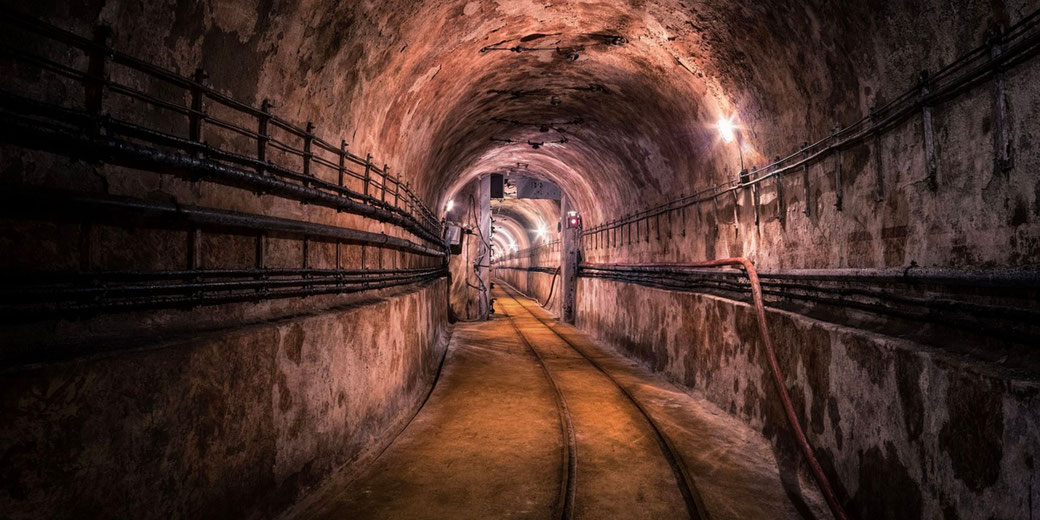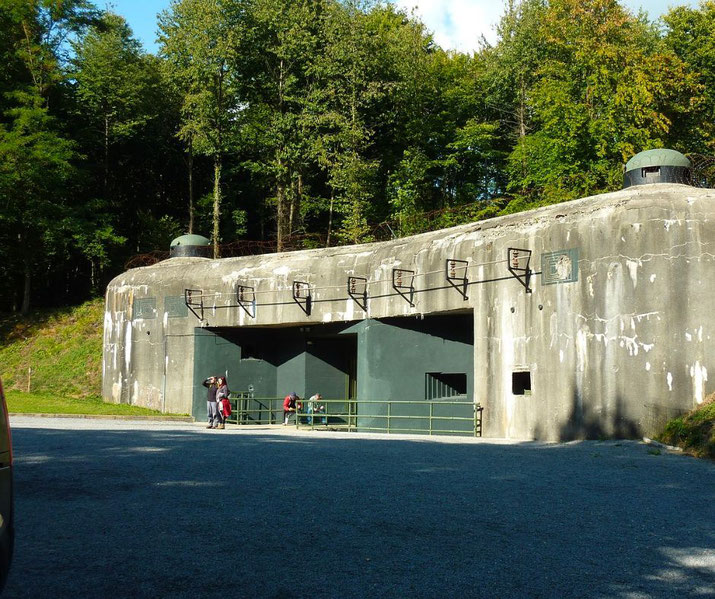The Maginot Line: France's mighty fortress that failed to stop Hitler's invasion in 1940

The Maginot Line was one of France’s most important military projects between the world wars, which was designed to protect the eastern frontier after the destruction of the First World War.
However, it collapsed as a defensive strategy within just the first few weeks of the Second World War.
Why was the Maginot Line built?
French military leaders and political authorities expected another German invasion after the armistice of 1918, and their planning focused on preventing a repeat of the mass destruction France had suffered between 1914 and 1918.
The First World War had left over 1.3 million French soldiers dead and devastated the industrial and agricultural regions of the north-east.
French commanders concluded that future war should be prevented or at least delayed by a permanent system of fortifications.
Many French officers did not believe that the Treaty of Versailles had permanently removed Germany’s ability to fight another war.
They feared that the reparations clause, along with German territorial losses, would provoke lasting resentment that might erupt into renewed aggression.
Specifically, Article 231 of the treaty, which placed full blame for the war on Germany, and the demand for 132 billion gold marks in reparations were especially controversial.
The French High Command decided that a strong defensive line, which could block or delay an invasion from the east, would allow time for France to fully mobilise its military reserves and launch a counteroffensive before German forces could reach key cities and supply centres.
The leading voice for this project was André Maginot, a decorated veteran of the First World War and the Minister of War in multiple French governments.
Wounded in combat and left with a permanent limp, Maginot lobbied for funding in parliament and promoted the idea that France’s security depended on fixed fortifications.
The Chamber of Deputies approved the first phase of construction in 1929 and, although Maginot died in 1932 before its completion, his name remained attached to the entire defensive system as a symbol of national determination.

The incredible construction of the Maginot Line
French engineers began construction on the line in 1930, following initial planning and funding approvals in 1929, and they focused on the border zone between Luxembourg and Switzerland, which included the regions of Alsace and Lorraine.
This area had seen heavy fighting during the previous war and remained strategically important, as Germany had annexed it in 1871 and only returned it after 1918.
The line stretched along most of the French-German border, owing to political and strategic decisions that left parts of the frontier unfortified.
The French General Staff did not extend the line along the Belgian frontier, as they hoped Belgium would remain neutral and believed that any extension into Belgian territory might provoke diplomatic problems.
This belief hardened after Belgium formally declared neutrality in October 1936, thereby renouncing its military alliance with France.
The line consisted of large underground fortresses, known as ouvrages, which connected to smaller bunkers, machine-gun nests, observation posts, and artillery positions.
Each major ouvrage contained barracks, mess halls, ammunition rooms, power generators, medical bays, and communication centres, all connected by concrete tunnels that sometimes stretched several kilometres.
Ouvrage Hackenberg and Ouvrage Hochwald, two of the largest installations, could house around 1,000 men each, with Hackenberg specifically designed for a garrison of approximately 1,040.
Crews could live underground for weeks without resupply, protected by metres of reinforced concrete up to 3.5 metres thick and steel plating.
Some fortresses featured retractable turrets that housed machine guns, anti-tank weapons, and artillery pieces ranging from 75 mm to 135 mm in calibre.
These turrets could emerge briefly to fire at enemy targets and then sink back into the ground for protection.
Electric trains carried supplies and personnel through narrow-gauge tunnels deep inside the line, which allowed rapid movement between sectors without exposing personnel to surface attacks.
The engineering skill behind the Maginot Line made it one of the most advanced defensive systems ever built.
Filtration systems protected against poison gas attacks, and air-conditioned bunkers kept conditions livable in all weather.
The entire project eventually cost over 3 billion francs, though some estimates placed the total closer to 5 billion, and it took nearly a decade to complete, with over 50 major ouvrages and hundreds of smaller installations built across the eastern border.
How the Maginot Line was meant to work in battle
French military planners expected the line to act as a shield that could delay or disrupt a German advance long enough to allow full mobilisation.
The line aimed to buy time for France’s army to move into position and launch a counteroffensive using mobile reserves positioned in the interior, rather than to stop an invasion on its own.
This strategy combined static defence with planned mobile warfare behind the lines.
Each section of the Maginot Line was designed to operate independently but also to coordinate firepower with its neighbours.
Observation posts provided accurate targeting information to artillery crews, and overlapping fields of fire ensured that every approach route would be covered by multiple weapons at once.
If any one bunker came under attack, others nearby could provide suppressing fire or supporting artillery fire to protect it.
Communication lines ran underground through the tunnel networks, which connected command posts to individual gun crews and forward observers.
The French army also stationed infantry and armoured divisions in the interior of the country, ready to respond once the enemy revealed their main axis of attack.
The expectation was that any German assault would come through Alsace and Lorraine, which had been the main route of the 1914 invasion.
General Maurice Gamelin, commander of French forces, regarded the Ardennes as a highly unlikely axis of attack, and this judgment influenced key deployment decisions.
Commanders believed that no rational enemy would attack head-on into the strongest part of the line, so they trusted that their opponents would either halt or be forced to find a slower, less effective route.
This belief led to a defensive doctrine that prioritised heavy firepower and large-scale engineering works intended for prolonged defence, while downplaying mobility and rapid adaptation.
The crucial weaknesses in the Maginot Line
The most dangerous flaw in the Maginot Line was its deliberate incompleteness. France had not fortified its border with Belgium because it wanted to avoid appearing aggressive and hoped to preserve diplomatic cooperation.
Strategic planners also believed that the Ardennes Forest, located between the end of the line and the Belgian border, would be too dense and hilly for a mechanised army to cross quickly.
This mistake created a major vulnerability in the defence of northern France.
French generals placed too much trust in fixed fortifications and did not adequately prepare for rapid, mobile warfare.
They assumed that another war would resemble the First World War in structure and tempo, which led to a doctrine based on slow-moving, methodical responses.
The army did not train extensively in coordinated use of air, infantry, and tanks or rapid counterattacks, and coordination between those forces remained limited.
German strategists studied these weaknesses and planned accordingly. By 1940, the Wehrmacht had developed and refined the blitzkrieg strategy, which used concentrated tank assaults supported by dive-bombers and fast-moving infantry.
This approach aimed to bypass enemy strongpoints, encircle large units, and strike deep into enemy territory.
Under the guidance of General Gerd von Rundstedt, and based on a plan proposed by Erich von Manstein, Army Group A led the main assault through the Ardennes, using seven panzer divisions.
This manoeuvre became known as the Sichelschnitt, or "sickle cut."
French political instability and economic difficulties during the 1930s also reduced the effectiveness of the Maginot Line.
Funding shortages delayed construction in some sectors, and many defensive positions were not fully connected to the national railway and road network.
The French army did not invest enough in updating its command systems or modernising mobile units, which left it poorly equipped to adapt once the German offensive began.
The Maginot Line's spectacular failure in WWII
Germany launched its invasion of France and the Low Countries on 10 May 1940.
Army Group B attacked through the Netherlands and Belgium, and this attack drew the bulk of French and British forces away from the southern part of the front.
Meanwhile, Army Group A launched a rapid strike through the Ardennes, led by seven panzer divisions in the spearhead, supported by artillery, engineers, and additional armoured units held in reserve.
German forces reached the River Meuse at Sedan by 12 May, overwhelmed local defenders, and crossed the river the following day.
The French High Command failed to react with enough urgency. The speed of the German advance shocked commanders, who still believed the Ardennes crossing was a feint.
While the strongest parts of the Maginot Line remained quiet, German tanks raced across northern France and reached the English Channel by 20 May.
This manoeuvre trapped much of the French First Army and the British Expeditionary Force in Flanders, which led to the Dunkirk evacuation in early June.
Over 330,000 Allied troops were evacuated during Operation Dynamo, including 198,000 British and 123,000 French soldiers.
Paris fell on 14 June without a major battle, and the French government requested an armistice soon afterwards.
Most sections of the Maginot Line never saw combat, and those that did offered local resistance but had no impact on the overall campaign.
Ouvrage La Ferté was the only major fortress to be overrun in direct assault, which resulted in the deaths of all 107 defenders.
Some ouvrages, like Schoenenbourg, resisted heavy bombardment from 420 mm artillery, which failed to penetrate them, and yet their endurance meant little in the wider strategic collapse.
German forces either bypassed or neutralised individual positions with targeted assaults that used artillery, flamethrowers, or infiltration units.
The French belief that the line would force a slow, predictable German attack had proved completely false.
Germany had relied on rapid manoeuvre that exploited speed and surprise rather than attrition or frontal assaults.
What happened to the Maginot Line?
After France surrendered in June 1940, German occupation forces took control of the Maginot Line without destroying most of its structures.
Some fortresses were used for storage, training, or propaganda purposes. The Vichy regime, which governed unoccupied France under German supervision, had no authority over military installations and made no effort to restore the line.
During the liberation of France in 1944, some bunkers briefly saw renewed fighting.
German troops used parts of the Maginot Line to delay American units that were advancing, especially in Alsace and the Moselle region.
However, the defences no longer held strategic importance, as Allied forces preferred mobility and airpower to siege warfare.
After the war, the French government took the Maginot Line out of service and took apart many of its installations.
Some structures were sold for scrap, others were left abandoned, and a few became museums or local landmarks.
During the early Cold War, certain sections were briefly modernised and reactivated as part of France's early Cold War defence strategy, particularly in Alsace, before the strategy shifted toward the Force de frappe, France's independent nuclear deterrent.
Historians, military analysts, and politicians used the line as an example of the dangers of preparing for the last war rather than the next one.
What do you need help with?
Download ready-to-use digital learning resources
Copyright © History Skills 2014-2025.
Contact via email
With the exception of links to external sites, some historical sources and extracts from specific publications, all content on this website is copyrighted by History Skills. This content may not be copied, republished or redistributed without written permission from the website creator. Please use the Contact page to obtain relevant permission.





